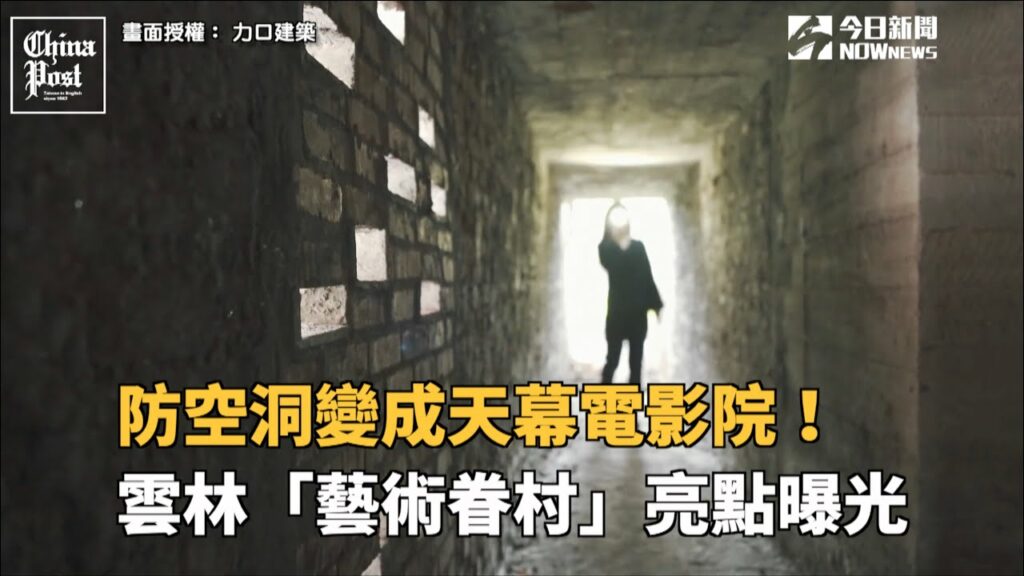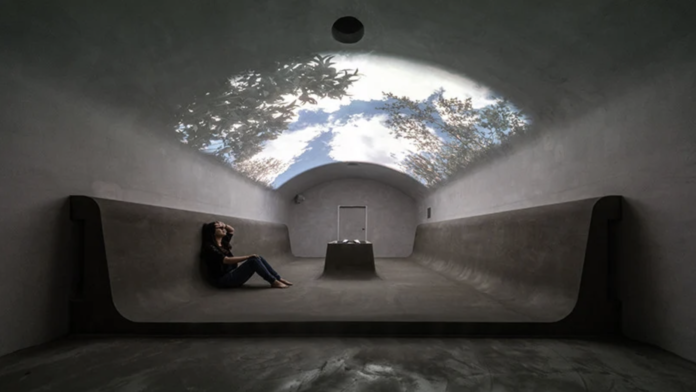
【看CP學英文】雲林虎尾空軍眷村「建國一村」有兩座建於 1943 年二戰期間所建造的軍事碉堡,至今約有 80 年的歷史。台灣設計團隊力口建築結合多媒體以及VR虛擬實境,將防空洞改造成天幕電影院,讓現代人透過科技體驗過去戰火威脅下的恐懼。
A military dependents’ village located in Huwei, Yunlin features two military bunkers built-in 1943 during World War II. Taiwan’s design team Studio APL (力口建築) has incorporated multimedia and VR virtual reality to transform two air-raid shelters into a sky theater and gallery, allowing visitors to learn about the horrors of war.
力口建築將當地老舊的軍事碉堡整理復原,基地戶外招牌、小防空洞修補過後的缺口、透氣孔灑下的自然光,與MR、VR的人造光源其影像的對話,透過光線編織記憶,讓現代人體驗當時戰火的威脅性及緬懷過往奮鬥的戰士們。
Studio APL and tai-yi associates worked together to repair the air-raid shelters, clean up the air vents, and let the sunlight in.
Under the project, called “hidden escape,” the military bunkers are now aimed at inviting people to re-experience the threats of war and to commemorate the soldiers who fought and lost their lives through virtual reality (VR) and mixed reality (MR).

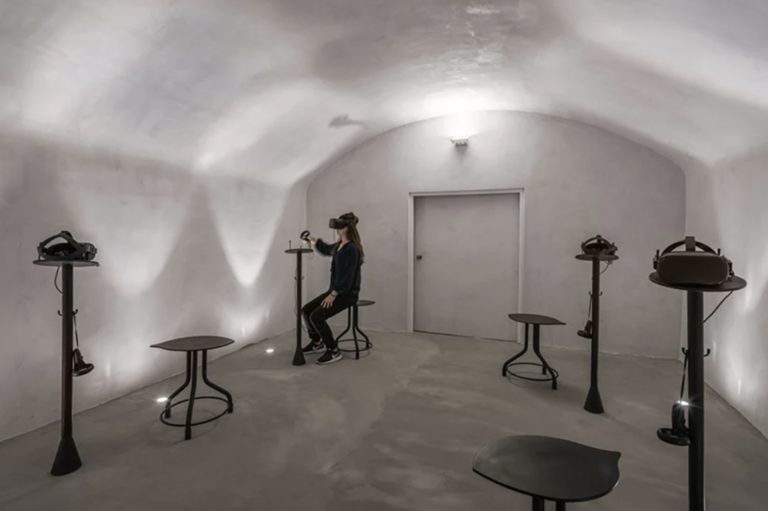
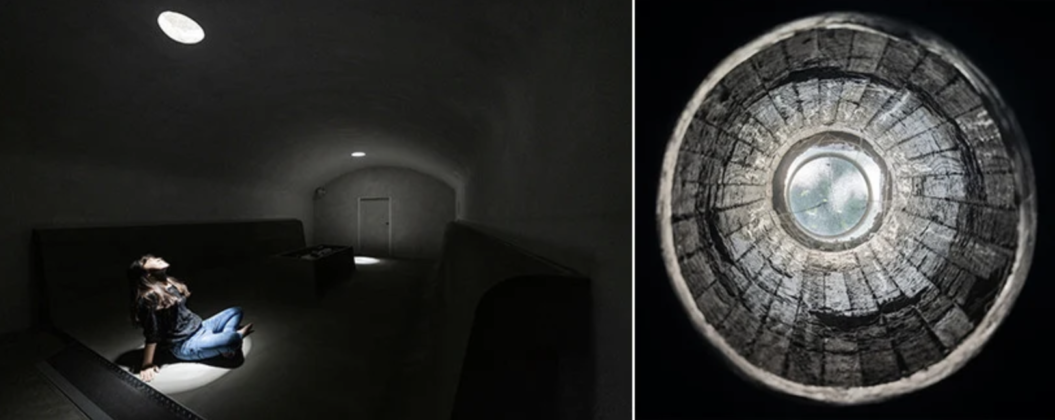
設計團隊延展防空洞的空間性,整合臨時性的帳篷作為資訊台,噴霧系統也降低室外高溫,讓藝術家們的裝置與戶外的雜木林地景連結。
The design team extended the spatiality of the shelter by integrating a temporary tent as an information desk.
The misting system also reduces the heat outside the bunkers, allowing the artists’ installations to connect with the outdoor wooded landscape.
此外,小防空碉堡側牆曾被開鑿出的洞口,在填補後將視線連結到新的地坪,來隱喻隱藏的土丘,展現碉堡土丘與現今藝術的更迭蛻變。
In addition, the hole once cut out of the sidewall of the small air defense bunker is filled in to extend the view to the ground level.
The filled hole represents the hidden mound, showing the transformation of the bunker mound and modern art.

室內入口處保留通道以呈現通透感,讓人意識到防空洞的主體存在。將大碉堡其中兩個 空間作為 VR 空間及 MR 空間。
The interior entrance retains a passageway to present a sense of permeability, making people aware of the shelter’s main structure.
The larger shelter is now a media gallery divided into an area for virtual reality (VR) and mixed reality (MR).
VR 體驗區讓人們以虛擬實境的方式進入到二戰時期使用摩斯密碼進行通訊設備。
In the VR room, visitors are brought back to world war II to send morse code by waving their hands.
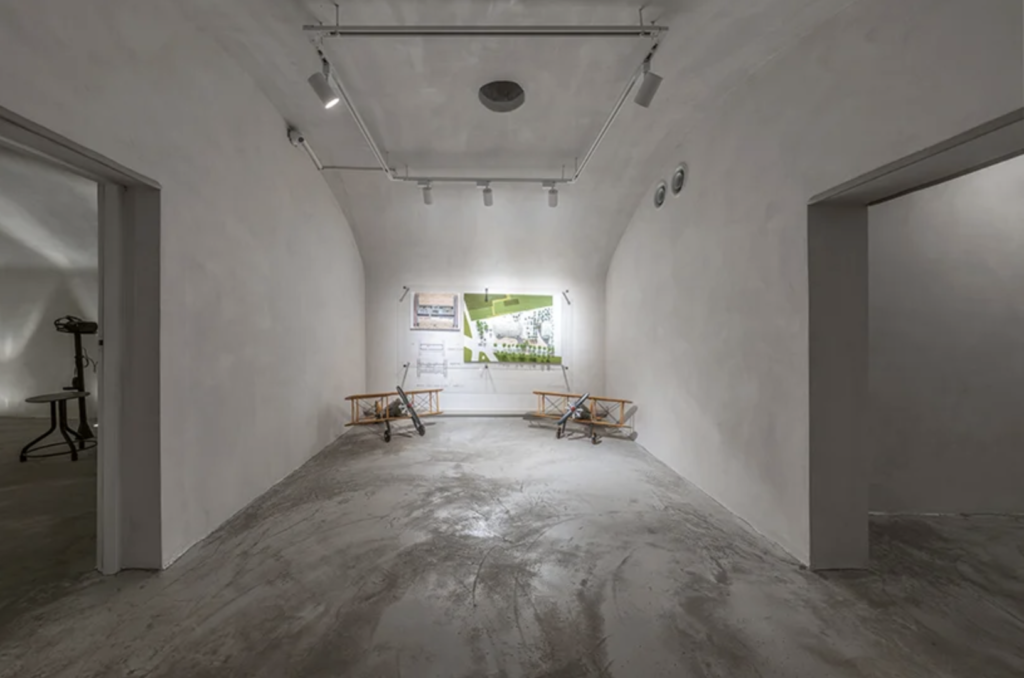
然而 MR 空間讓人們席地倚坐在兩側,將動畫投射在拱型天花板,碉堡既有的建築形態成為新的影像平台,讓觀眾有虛擬和真實兩種模式的感官體驗。
As for the MR area, visitors can sit against the wall and immerse themselves in the past, thanks to images projected across the ceiling of the bunker.
小碉堡則保留原有空間型態僅作構造及影片說明,讓人們可體驗新舊質感的對比。
The smaller air-raid shelter retains its original structure, emphasizing the contrast between the basic function during wartime and the reborn design.
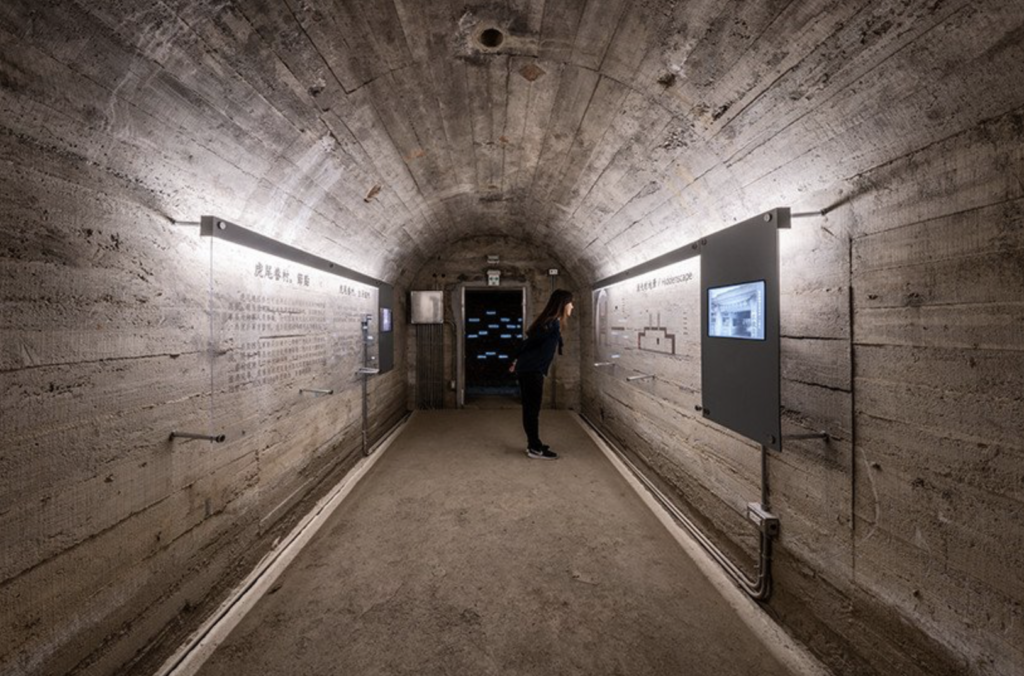
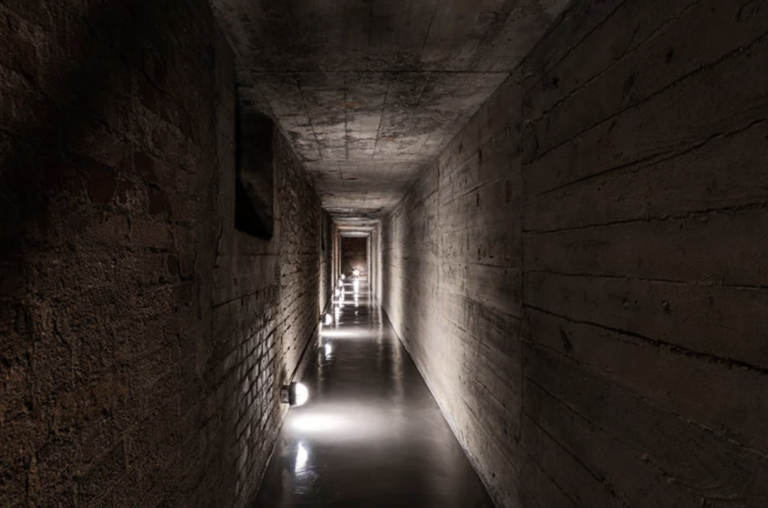
除此之外,在防空洞入口處地面磚頭以圓形放射狀作為主設計,引領民眾進入一探過去軍事遺址。體驗區外,放著一個圓形木凳,以及防空洞體驗說明版,提供民眾休憩,同時了解防空洞記憶傳承體驗的背後故事。
Outside the bunkers, a circular array invites people to step inside the unassuming entrance. Also, a laser-cut plaque at the entrance serves as an introduction to the immersive experience that lies inside. When visitors are tired, they can sit on the curved bench and reflect on what they learn and experience in the historic military site.

原文自《The China Post》

